This lovely cocotte has graceful touches that mark it as an antique pre-war piece.

- Type: Tin-lined oval cocotte in lightly hammered finish with brass handles fastened with three copper rivets; fitted lid with brass handle fastened with two copper rivets on each bracket
- French description: Cocotte ovale martelée et étamée avec poignées en laiton munies de trois rivets en cuivre; couvercle emboîté avec poignée en laiton munie de deux rivets sur chaque côté
- Dimensions: 30cm long by 20cm wide by 12.5cm tall (11.8 by 7.9 by 4.9 inches)
- Thickness: 1.4mm at rim
- Weight: 1990g (4.4 lbs); 2071g (4.6 lbs) with lid
- Stampings: “Blaser & Cie 59,61 Rue Montmartre Paris”; F; 30
- Maker and age estimate: Unknown; 1920s-1935?
- Owner: Stephen Whalen
This is a lovely specimen of a type of pan that’s a common element in a French kitchen. An oval cocotte is ideally suited to braising the small to medium-sized proteins — chicken, game birds, cuts of beef and lamb — that are central to French cooking. There are so many oval cocottes on the vintage market that it’s possible to become a little “cocotte-blind,” so to speak; but this one, owned by reader Stephen Whalen, has a level of finish that, while subtle, adds flair to the piece and also gives clues as to when it was made.
First, take a look at the side handles. That downward-pointing peak on the baseplate is the classic antique French style, while most of the modern (that is, post-WWII) cocottes I’ve seen have a plainer lozenge-shaped baseplate. Also note the peak in the handgrips — it’s not so visible in this photo, but you can see it more clearly in the photos that follow — that adds some elegance. This more ornate styling suggests to me that this is a pan from the pre-war period, before these little flourished were smoothed out by mid-century sensibilities.

Another clue is the design of the lid handle: two rivets on each bracket when only one is strictly necessary. This pan is neither large nor particularly heavy — the lid weighs 810g (about 1.7 lbs) — but these rivets give it the styling of a larger and heavier piece. (Think of this pan like the two-door model of a European sports car brand — it deliberately maintains the sumptuous trimmings of its larger and more powerful siblings to remind you that its small size does not mean it has skimped on luxury.)

The rivets are also flat and flush-set on the interior of the pan and lid. These disk-like rivet heads are a style from the antique era; newer pans have mushroom-head rivets.
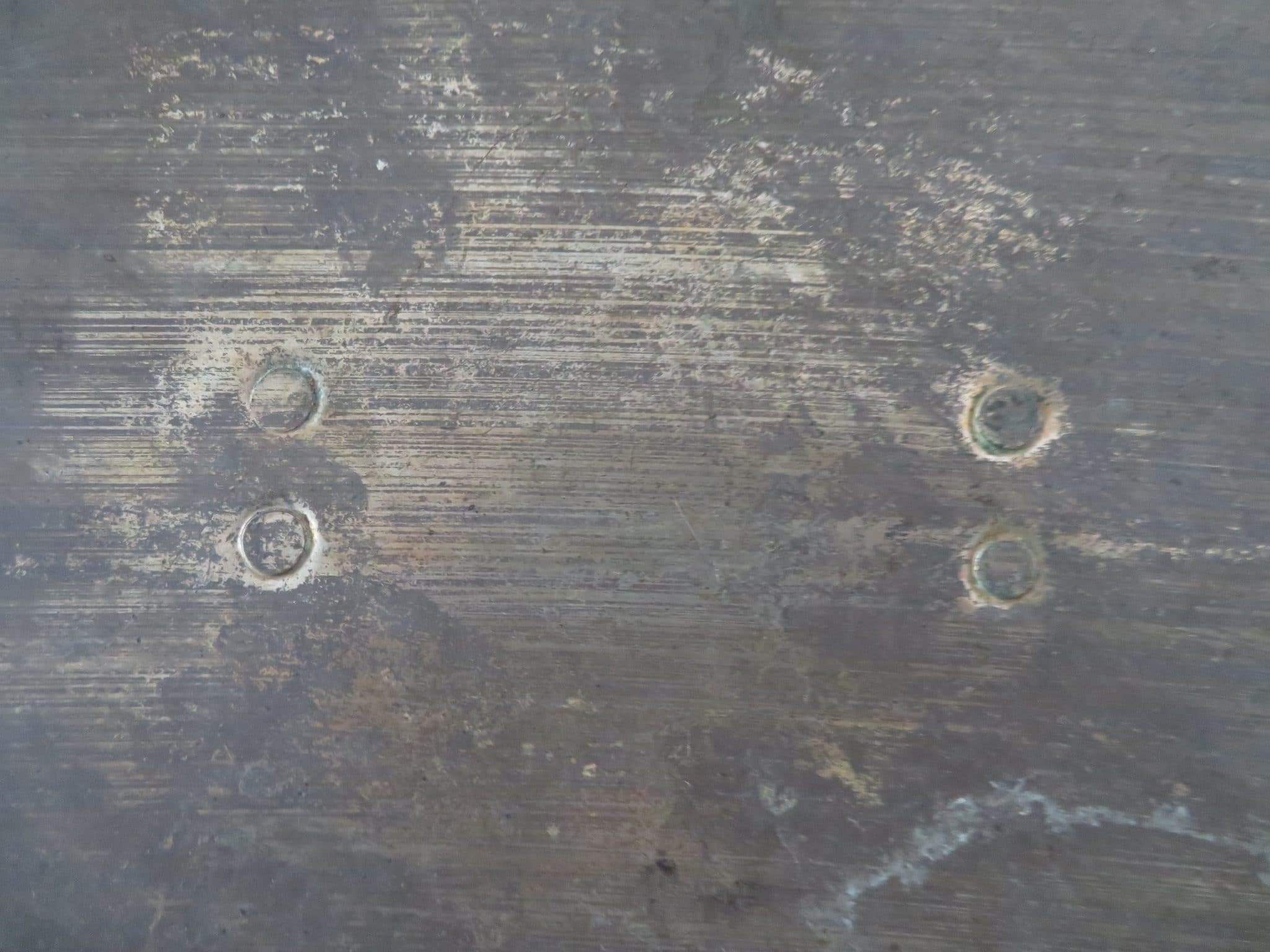
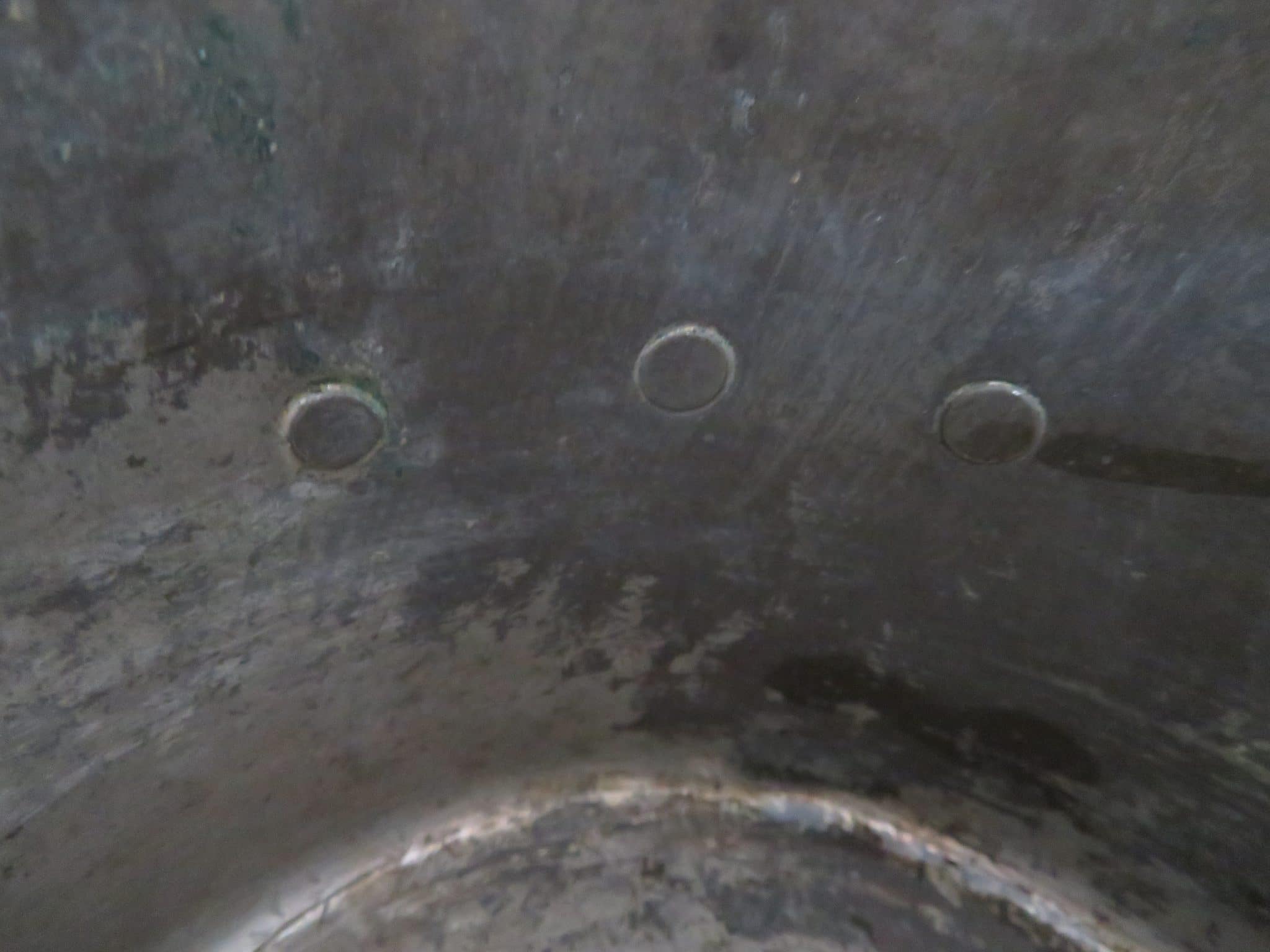

Another clue to this pan’s age and heritage is that it is dovetailed and not welded. Asymmetrical copper pieces like oval cocottes and rectangular daubieres have always been pieced together due to their shape. In the modern era, these pieces are joined together with welded seams, but prior to about the 1920s — before welding came into common use in French cookware — the makers still used dovetailing, an older technique that interleaved slices of copper, pounded them together, and sealed the cracks with brazed brass. These zig-zag yellow lines around the base and up one side of this pan tell me that this is still an antique pan.
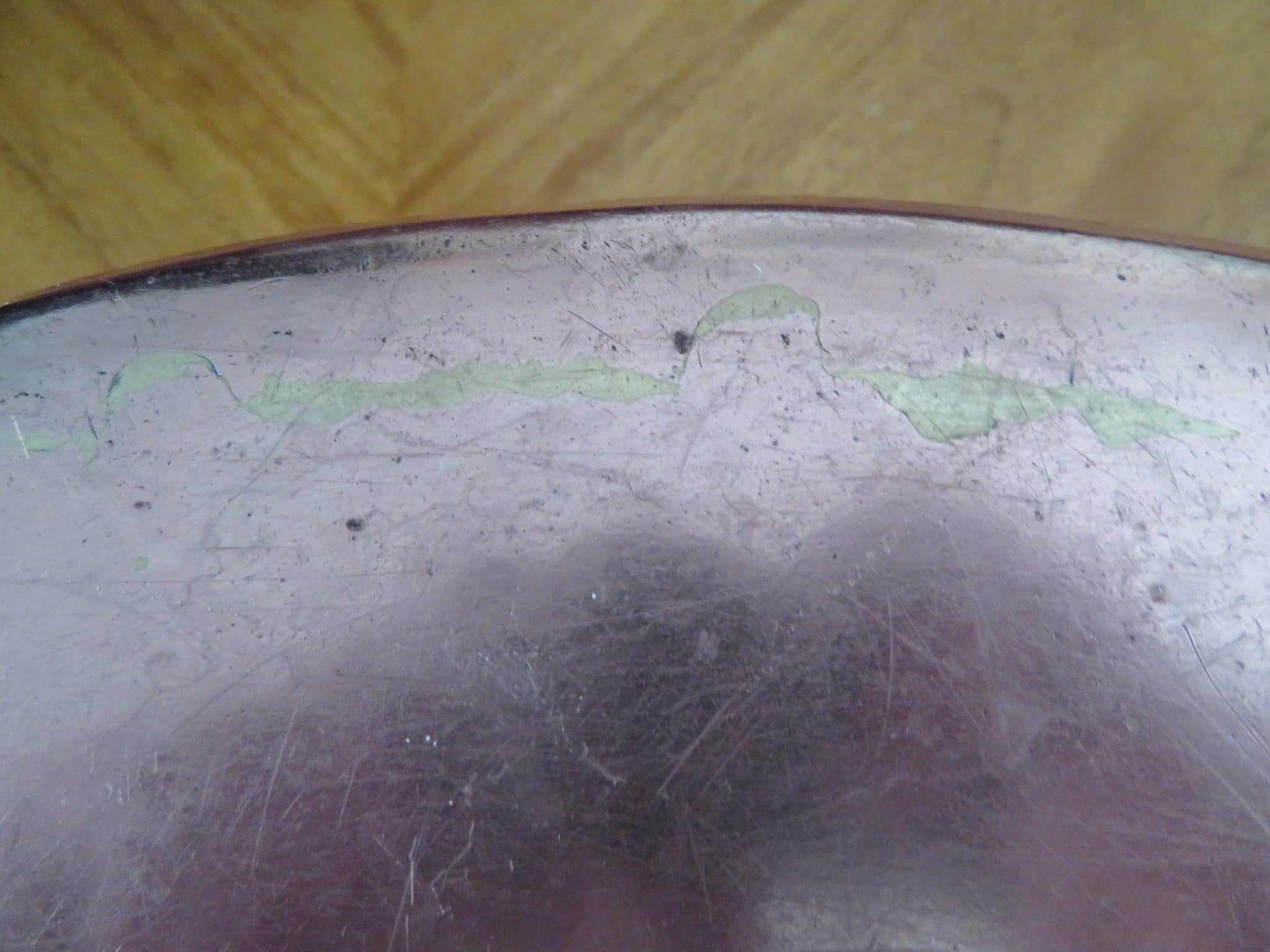
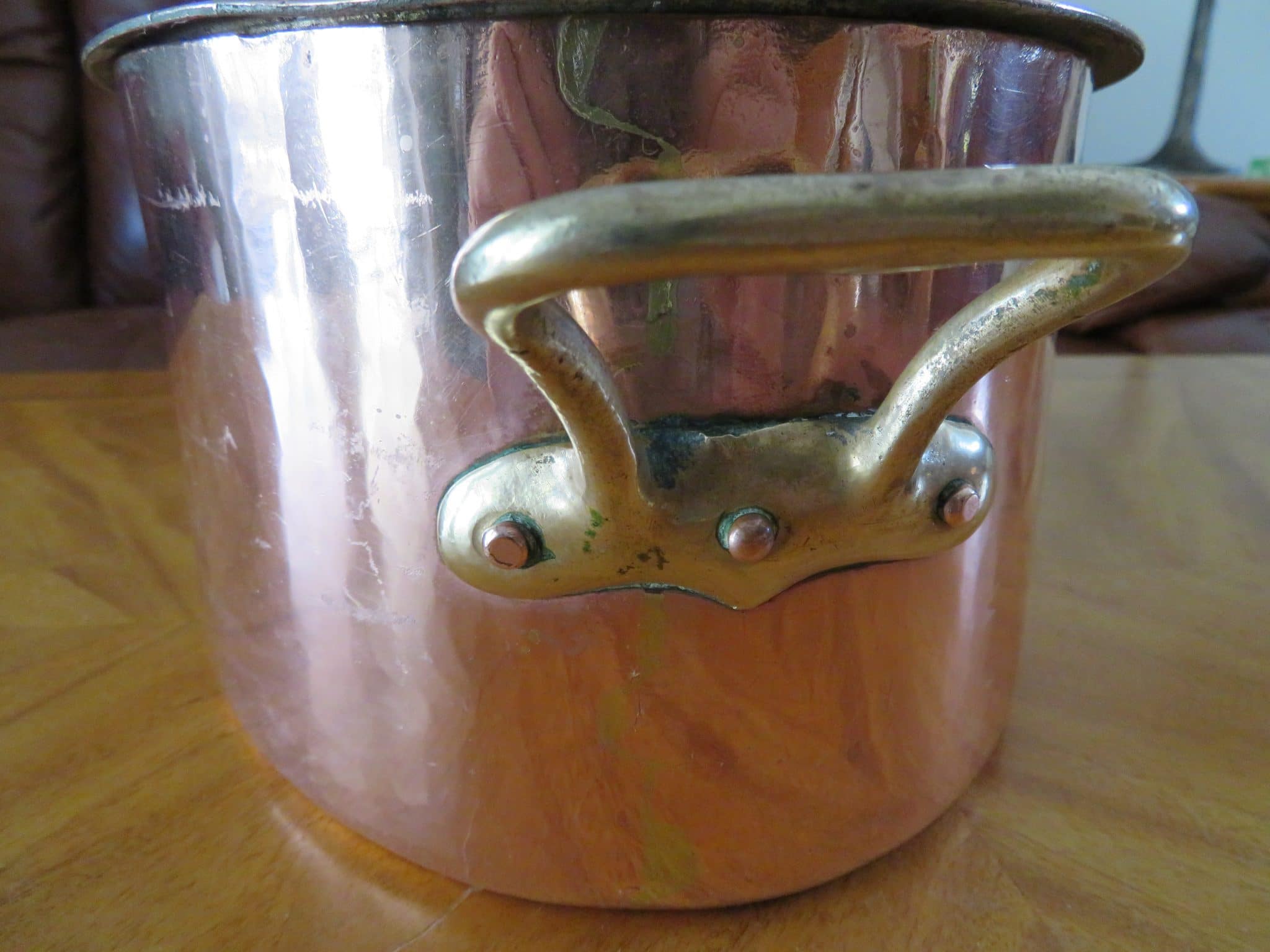
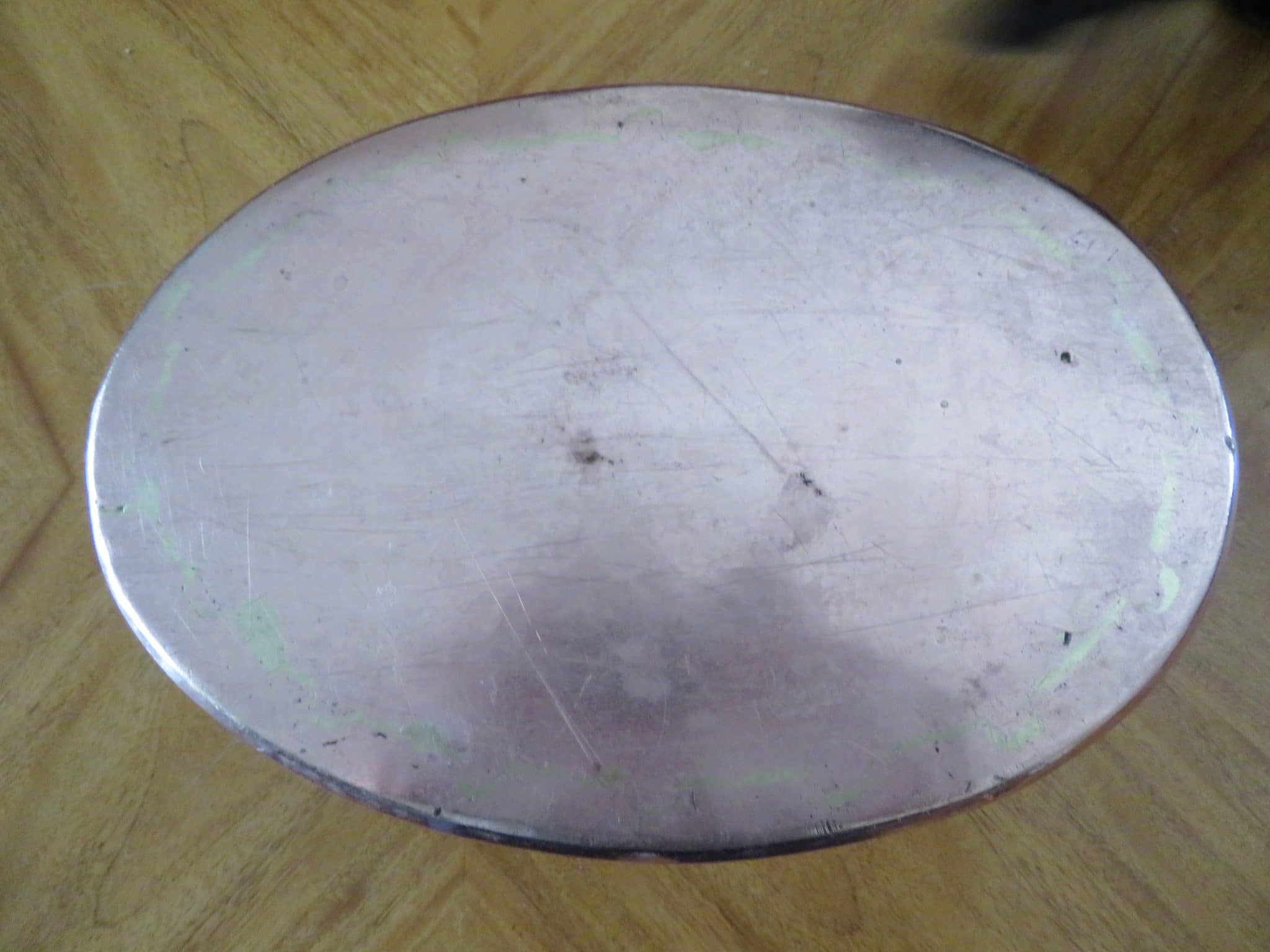
And it’s in beautiful shape. Stephen has opted not to restore it, and the tin is in fine used condition. (This is also a good photo to see the peaks in the handgrips that I mentioned above — look how lovely they are.)

And finally let’s take a look at the stamps. This pan carries three: a store stamp for Blaser & Cie; 30, for the pan’s length in centimeters; and F, an owner’s stamp.
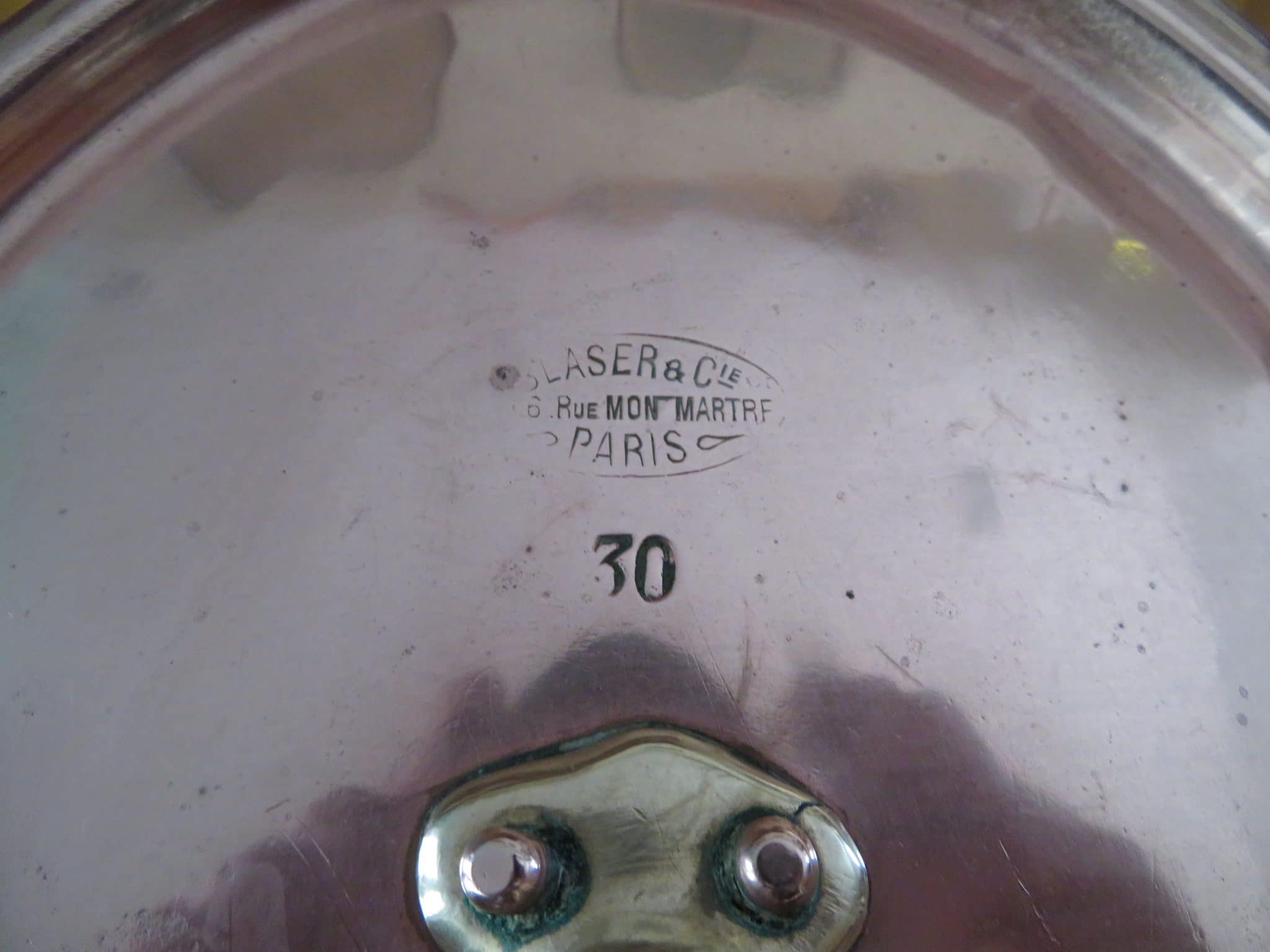

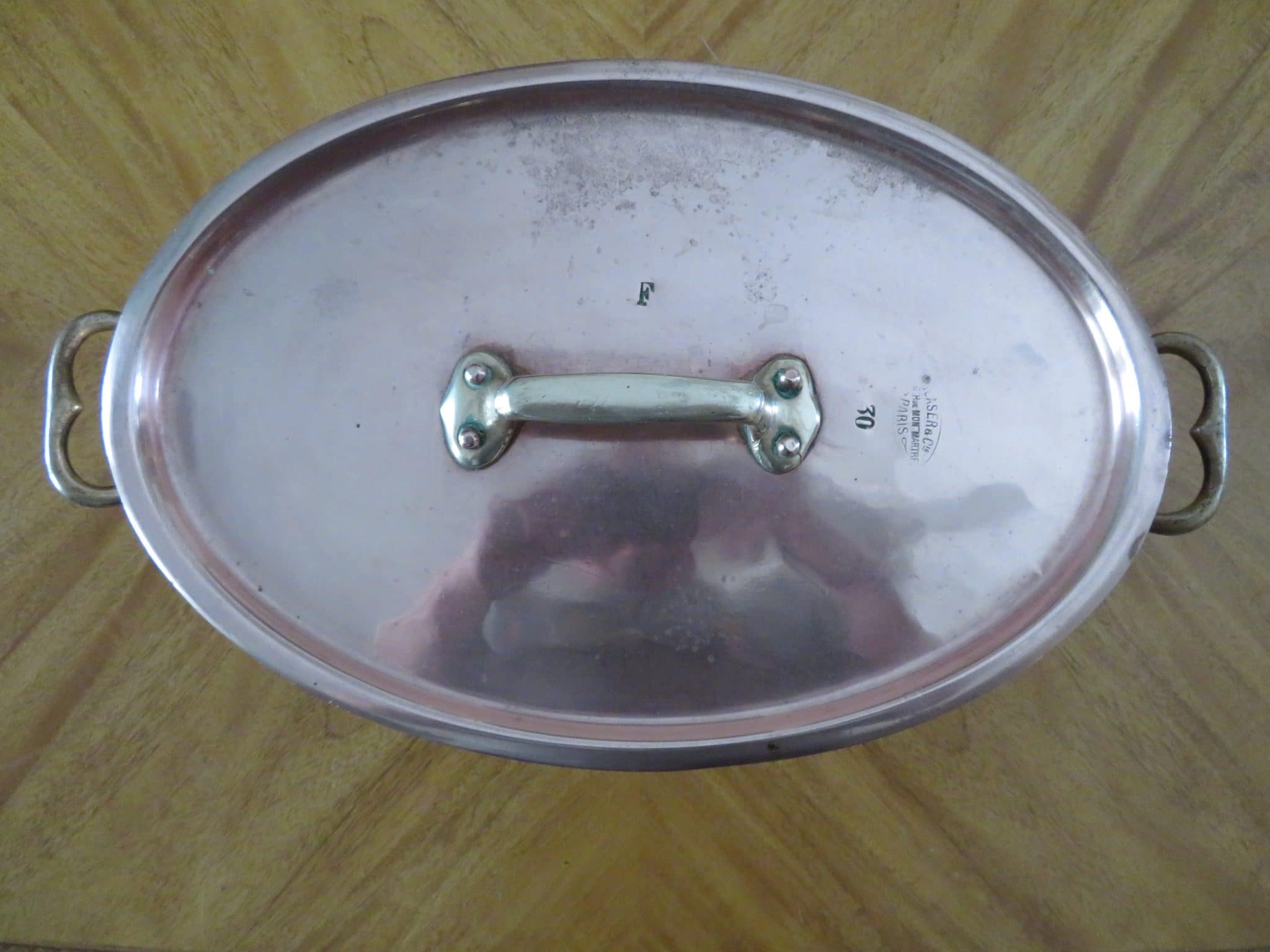
Store stamps and maker’s marks are great help when estimating the age of copper, but Blaser & Cie is one of the more mysterious to me. This was a kitchenware store at 59 and 61 Rue Montmartre in Paris but there is very little information extant about it. TJFRANCE helpfully provided a rundown of information he was able to find:
The Blaser House had its offices at 59 and 61 rue de Montmartre in Paris. In 1897 the building was for sale so it is certain that at that time there was no house BLASER at these addresses. In the years 1920 it is found under the name of BLASER AND CIE. So I guess the copper pots bearing that name are the oldest. In the 1940s the name is ETS BLASER (we no longer find the terms: AND CIE) until 1973 when BLASER House is sold to another company. He distributed cooking equipment for individuals but also canteens, hospitals, administrations, delicatessens, pastries, etc … Conclusion, minimum 1928 (so perhaps before and until 1973).
Unfortunately, I can’t corroborate any of that with my own research. I reviewed Paris phone books from 1921 to 1926 but there was no “Blaser & Cie” on Rue Montmartre. However, I did find a public notice that Alfred Blaser liquidated his store at 59 and 61 Rue Montmartre in 1935.
One possible thread through this is that Alfred Blaser’s store on Rue Montmartre was short-lived — that is, between 1926 and 1935. That time estimate would fit with this pan’s dovetails and antique styling from the inter-war era. It is possible, of course, that despite legal “liquidation” the business moved somewhere else, but if so I can’t find evidence of it.
And as to the question of who made this copper pan, I can unfortunately make no response at this time. Blaser — like Dehillerin, Chomette, Mora, and any number of French retail and wholesale kitchenware suppliers — would have sourced copper from the best: Gaillard, Mauviel-Gauthier Frères, Lefèvre Frères, Legry, or any number of chaudronneries active at the time. I wish my knowledge extended to spotting the techniques of individual makers but I am not there yet.
But still. Regardless of who made this piece, I think it’s beautiful. One of the many things I appreciate about antique French cookware is the care put into every one. This cocotte — workhorse of the French kitchen — has beautiful handles and finishings that make the touch of the craftsman apparent all these years later. It’s a pleasure to see it and I thank Steve for sharing it with us.







Interestingly, the Matfer (short for Matériel en Ferblanterie) workshop was located at 13 Rue Montmartre roughly between 1899 and 1924. Being literally separated by door steps, I wonder if there are some dots to connect between Matfer and this lovely cocotte?